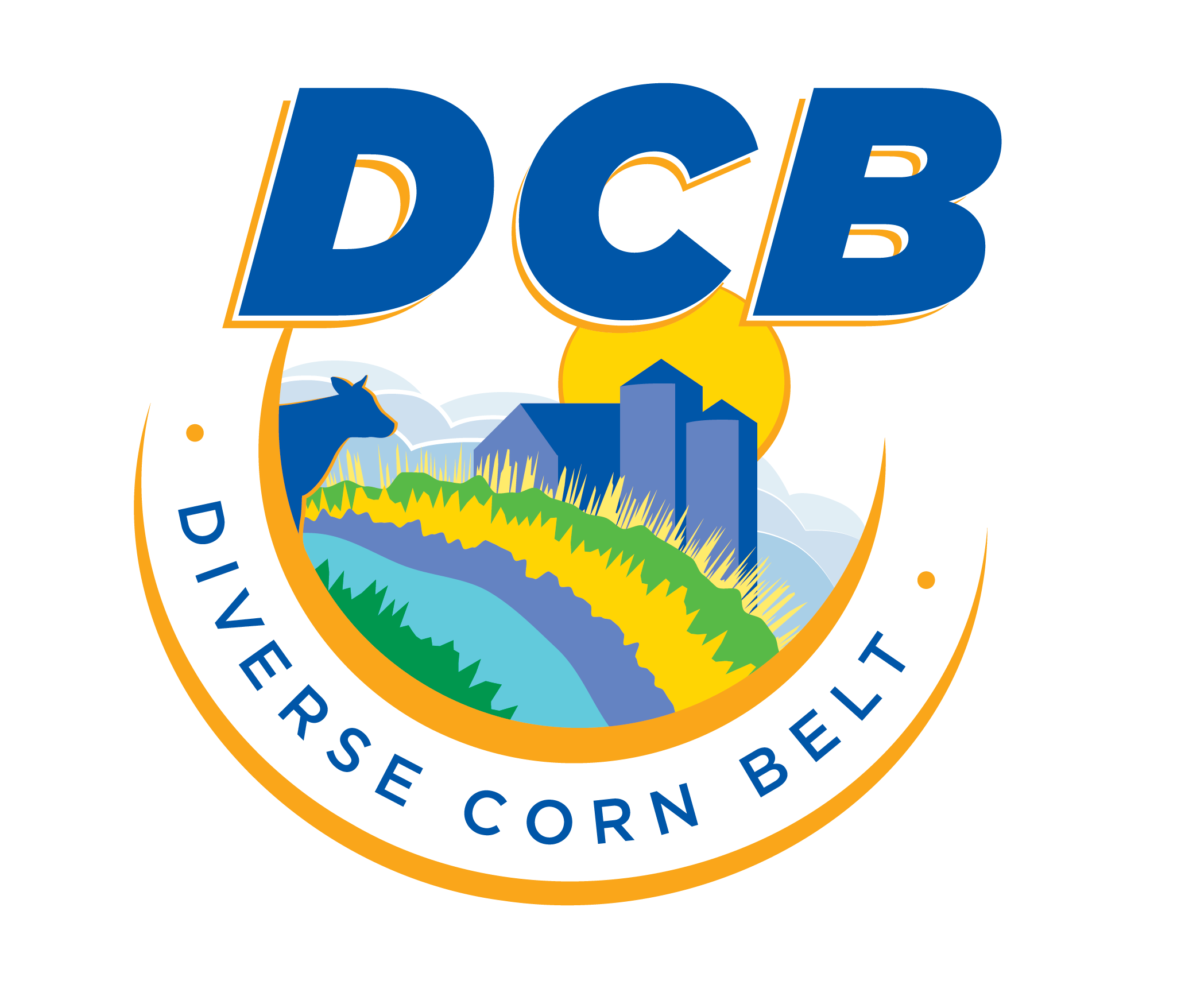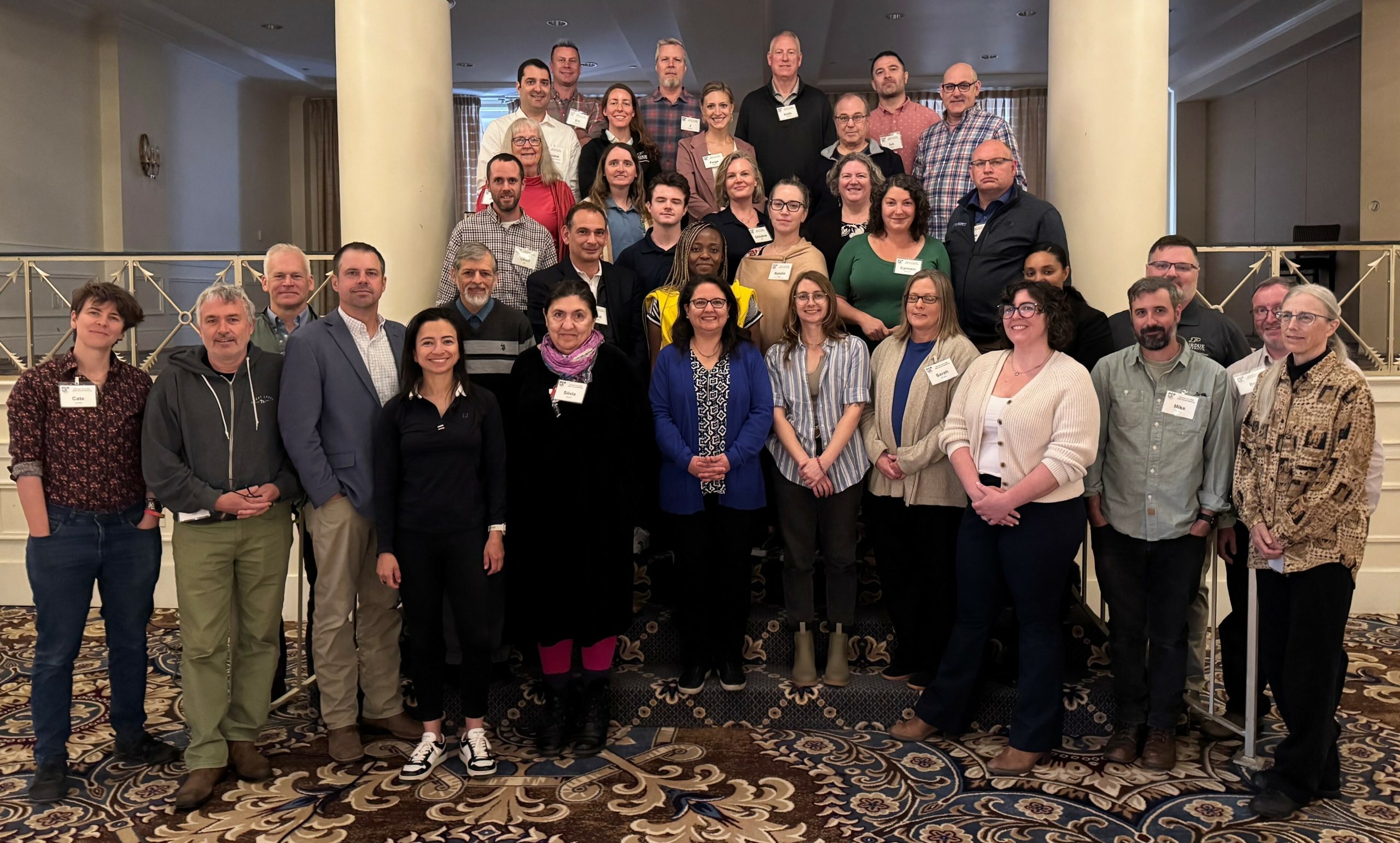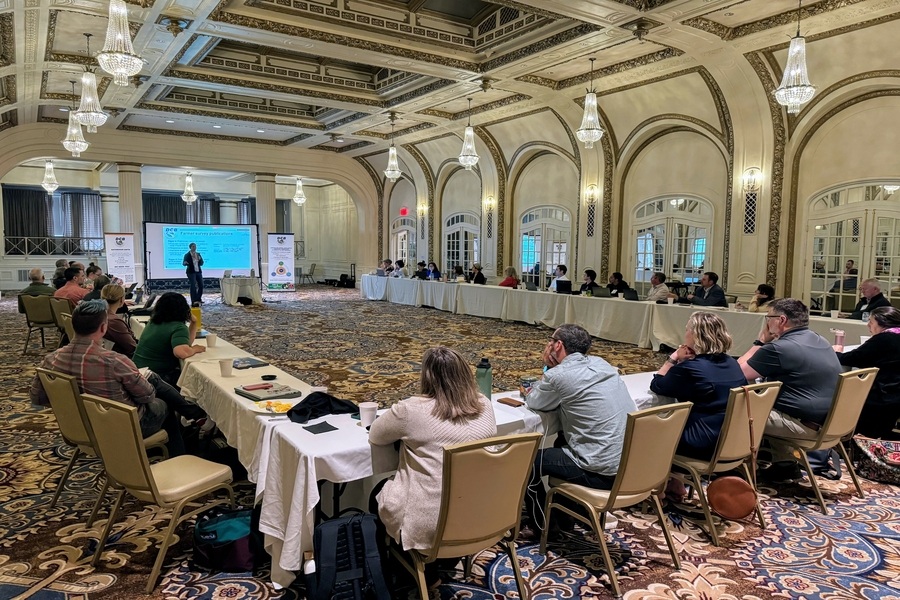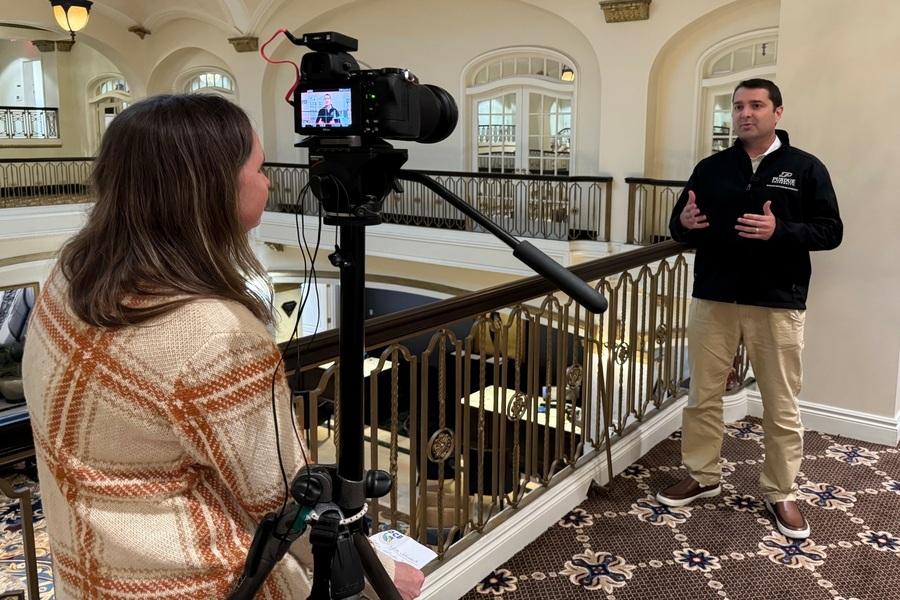One of the Diverse Corn Belt Project’s (DCB) strengths is the collaboration of several disciplines in gathering insights about farming systems in the Midwest. That strength was showcased at the recent DCB All-Team Meeting in Davenport, IA. More than 35 members of the DCB Team met May 20-22 to share ideas and provide research updates and results.
Within DCB, seven teams examine various aspects of diversification in the Midwest. At the recent All-Team meeting, each group reported on their work from the last year.
Here are some highlights from the research and results presented:
The In-Field Team collaborates with farmers throughout Indiana, Illinois, and Iowa to study groundwater, insects, weeds, and soil health indicators on a variety of production systems. Soil health researchers are finding that context matters when looking at a farm field and the practices that could improve that field’s soil health. When examining weeds, team members noted that “rotation simplification and intense herbicide use” can narrow weed pressure to the most competitive species and foster more herbicide resistance, while more diverse weed communities may actually help crops.
Entomologists are studying how beneficial insect populations may be affected by diversity, as well, and hydrologists sample groundwater under various cropping systems to see how nutrient runoff is affected by what’s growing on the surface. As further results come in, the In-Field Team will be combining all of their results, from water to weeds, to understand the impact of crop and livestock diversification on the landscape.
Imagining Tomorrow’s Corn Belt: The RAD Team
The Reimagining Agricultural Diversity (RAD) Team also focused on landscapes. At RAD Meeting 2, participants were given AI-generated images of landscapes from each of the five DCB systems and asked to identify benefits and challenges that could arise in those scenarios. From those comments, RAD Team members are now looking at the barriers, opportunities, and vision for each landscape, as well as looking at what policies and markets could benefit those landscapes.
The RAD Team also celebrated the publication of “‘Safer to plant corn and beans’? Navigating the challenges and opportunities of agricultural diversification in the U.S. Corn Belt.” Two more papers based on farmer interviews are in the works, and publications discussing farmer surveys and focus groups also will be submitted. The fourth RAD Team meeting is planned for late summer/early fall of this year in conjunction with a field day.
The results of the RAD Team meetings and focus group conversations have guided the research of the In-Field and Modeling teams. The results also influence the direction of DCB’s Extension, Education, and Communications projects.
Of course, planting crops without consumer demand is not practical. To understand more about markets for alternative crops that can grow in the Corn Belt, the Markets Team reported on their work researching oat milk customers. The team surveyed oat milk drinkers about their preferences and values, finding that consumers are driven by taste and texture, their health, the environment, and financial situations. By demonstrating that there is interest in oat milk, DCB can help farmers identify markets for oats that can be added into corn and soybean rotations.
To pull all the pieces of the supply chain together, the team also surveyed grocers and restauranteurs about their decision-making processes when buying fresh market agricultural products. Produce growers were surveyed on their views about agricultural diversification. Through these surveys and understanding the supply chain from farmer to retailer to customer, DCB can identify opportunities for market growth in the Corn Belt.
With their work in aerial imagery and remote sensing data, the Modeling Team studies how historic land use might predict locations for future diversification. Hydrological models are used to research how various ground covers such as cover crops or perennial plants affect pollutant run-off. Foodshed models look at scenarios of growing more local food and providing that food to a nearby customers.
Other Modeling Team studies include a look at farmers’ interest in diversification. In the RAD Team’s farmer surveys, between 23 and 25 percent of farmers said they were very likely or likely to start using or continue to use extended rotations or grazed livestock in their systems, even without an additional monetary incentive. For horticultural food crops, 84 percent of farmers said they would not be interested in incorporating horticultural food crops into their system without an incentive.
The Modeling Team also is putting together workshops for high school and undergraduate students on topics such as reading historical and remote sensing maps, determining efficient land use from historical data, and analyzing cropping projections.
To help those farmers who hope to extend their rotations to include different crops, the Extension team is working on a group of publications about extended rotations, grazed livestock, perennial forage or bioenergy crops, horticultural food crops, and agroforestry in a corn and soybean rotation. The publications will include information on benefits and opportunities of the practices, possible challenges, and how the systems fit into corn and soybean rotations. With these publications, results from the In-Field and Modeling Team can come together and help farmers make the best decision for their operation.
Together with the Communications Team, the Education Team led discussion on videos about diversified systems. This summer, two filmmakers will be attending field days and visiting with farmers to learn about their operations. They will then put together a documentary telling those farmers’ stories, as well as several educational videos to fit with curriculum the team is creating.
This curriculum focuses on diversity within the agricultural landscape. Lessons will cover agricultural, ecological, economic, and human diversity and will be available to high school and college instructors in disciplines such as agriculture, sustainability, and ecology.
These lessons ensure that DCB’s work reaches the next generation, the decision-makers of the future.
The Communications Team showcased a TV report on DCB that aired in January, as well as meetings and publications that highlighted DCB’s work. Through working with media, writing stories for the website and newsletter, crafting social media posts, and creating videos, the Communications Team shares the successes of the DCB Team and showcases the opportunities for agricultural diversification in the Midwest.
Just like the various plants and animals in a farming system can complement one another, the members of DCB’s research teams collaborate and cross-pollinate. Together, researchers, farmers, writers, and more bring exciting new insights that can inspire greater agronomic, economic, and social diversity and resilience in the Corn Belt.




